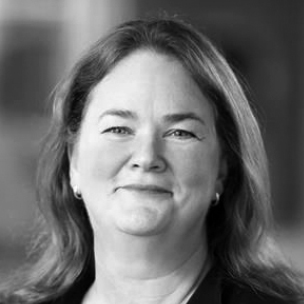ATSE's Reconciliation Action Plan (RAP) will support us as we take steps to reflect and plan for future change. We have established a Fellow- and employee-led RAP Working Group, with generous guidance and advice from a RAP Reference Group comprising Aboriginal and Torres Strait Islander leaders in STEM, and STEM leaders with a strong track record in leading reconciliation.
As we observe this year's National Reconciliation Week having taken our first steps towards reconciliation through our Reflect RAP, we caught up with Dr Sarah Ryan FTSE, co-chair of the ATSE RAP Working Group, to discuss the importance of reconciliation.
What does reconciliation mean to you?
It means acknowledging the reality of the past, committing to learn from it and from Indigenous people, and walking together to the future. We are all Australians and will share a future together.
Why is having a RAP so important?
Having a RAP is a visible symbol of commitment to reconciliation for an organisation, which is important. Also, RAP stands for Reconciliation Action Plan and the key for me is that it is an action plan. It lays out the concrete steps and actions that an organisation will do, with clear timelines and accountabilities. The RAP is in a way a tool and a framework to keep the organisation focused. As we all know, ‘what gets measured gets done’.
What has it meant to be a key member in developing ATSE’s RAP?
I was co-chair of the ATSE RAP Steering Committee, alongside Dr David Hind OAM FTSE. Together with the ATSE team we gathered the group (who were equally women and men, Indigenous and non-Indigenous, and from academia industry and government), set the agenda and participated in the development of the RAP. We had some strong and challenging conversations along the way, all done in a positive and respectful way. I really appreciate the honesty and openness from all the team members.
I was one of the ATSE delegates to the ACOLA discussion on the Uluru Statement from the Heart, and in my role as non-executive director of various ASX-listed companies have been involved in several RAPs at the highest levels, over more than ten years. I was happy to be able to bring this experience to developing ATSE’s RAP.
Are there any actions in our RAP that you are especially excited to see implemented?
All of the actions are important and together make up the whole of the plan, some will be more visible than others but all are steps forward.
What advice would you give to others starting on their reconciliation journey?
Two things come to mind. Firstly, do not jump straight to what you think is the solution. Invest the needed time listening to what all members, especially the Indigenous members, say are the challenges. In the ATSE RAP, we sent out a small questionnaire to all members of the RAP group to gather what they thought were the key challenges and solutions, to kick off the conversations. There was a real learning from the conversation that followed.
Secondly, having Indigenous people on the various groups involved – as many as is possible - is critical. They can be from your organisation’s stakeholders such as Traditional Owners, customers, government, as well as employees.








